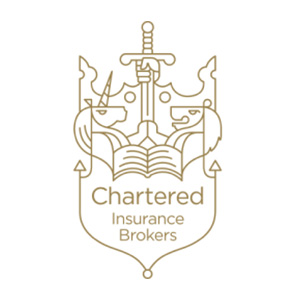
Insurance for Charities and Not for Profit organisations
Getting the right insurance coverage in place can give you the peace of mind you need to continue your mission.
Receive personalised sector updates
SubscribeWhat type of risks do Charities and Not for Profit Organisations need to consider?
Charities and Not for Profit Organisations can face very different risks to typical commercial businesses.
Often relying significantly on goodwill, including everything from donations to personnel, you may have a number of dedicated volunteers actively working alongside full and part-time employees to advance your cause. This team is your responsibility to protect.
Organisations come in many different forms and scale of operation and rarely have the financial ability to deal with unexpected costs. Catastrophic damages can occur as a consequence of claims involving the health and wellbeing of your workforce, damage of property and assets, or addressing reputational damage caused by allegations of wrongdoing against a trustee, employee or volunteer.
Having the right insurance programme and preventative risk management strategy in place is essential to protect your organisation, get the support you need in the event of a claim and manage costs.
Why should Charities and Not for Profit Organisations choose Griffiths & Armour?
We have extensive experience and knowledge of supporting local community and volunteer groups, community interest companies (CICs), national charities, and globally recognised organisations often operating in volatile territories.
Our Charity insurance team includes everyone from brokers and risk managers to in-house claims support, who understand the environment you work in and the associated risks you face.
We recognise an organisation’s specific goals and become a natural extension of our clients’ team, with a proven track record in delivering tailored insurance programmes which are aligned precisely to their needs.
Beyond Protection
Beyond Protection is our end-to-end support designed to empower your business at every stage.
Our team gives you the tools to increase resilience and create peace of mind, no matter the challenge.
FAQs
Charities and not-for-profit organisations are susceptible to a wide of range of risks and typically require several key types of insurance to protect their Trustees, assets , Employees and volunteers and members of the public.
Examples of some of the insurances that should be considered will include;
- Charity Trustee Liability: where an allegation of a wrongful act against a Charity Trustee is made in the conduct of their activities (extended to include Directors and senior members of staff)
- Property Damage & Business Interruption: where damage (e.g. fire, theft, flood) is caused to Charity property and may have a consequent impact on the Charities ability to perform it’s duties
- Employers’ Liability (extended to include volunteers): where an employee or volunteer injures themselves whilst working for the Charity
- Public Liability: where a third party is injured as a consequence of the Charities activities
- Professional Liability: where the Charity is sued for negligence in the conduct and execution of your professional activities
- Motor Insurance: if the Charity owns, leases or hires Motor Vehicles for use on the organisation’s business
The important consideration here is that Charities have the same duty of care for volunteers as they do for paid employees and therefore, it is important to ensure that appropriate insurance is in place for volunteers to protect the Charity in the event of any injury to a volunteer or injury or damage to property caused by the volunteer while performing their duties for the Charity.
Employers liability will protect the Charity for their legal liabilities to volunteers following injury and Public Liability will cover the legal liabilities of the Charity should a volunteer cause injury or damage whilst undertaking duties for the organisation. Cover can also be arranged under a Personal Accident policy to provide a sum of money to the Charity following an accident whilst volunteering, which can be used to compensate individuals.
Additionally, if volunteers use their own vehicles for charity work, they must inform their insurance provider to ensure they have the appropriate cover and it good practice for Charities to regularly check the cover in place by volunteers who drive their own vehicle on Charity business.
It is crucial for charities to clearly communicate the scope of their insurance policies to volunteers and ensure that appropriate coverage is in place.
Determining the appropriate level of insurance cover for a charity involves several steps. Firstly, conducting a thorough risk assessment to identify potential risks and liabilities associated with the charity’s activities, assets, and services is essential. Griffiths & Armour can support on a number of risk management solutions to help make this process as easy as possible. It is also important to review legal requirements to ensure compliance with necessary insurance, such as Employers’ Liability Insurance and the Road Traffic Act 1998 in relation to Motor insurance. if the charity has employees. Evaluating the charity’s history of claims and incidents can help to understand potential risk areas and adjust coverage accordingly. Regularly reviewing and updating the insurance policies is vital as the charity evolves to ensure they remain adequate and relevant to current activities and operations. By taking these steps, charities can better understand their insurance needs and secure appropriate coverage to protect their organization and its stakeholders.








